Compared to the spartan 1976 original, 2023’s final Ford Fiestas are better-equipped, plusher, faster and sharper to drive than ever before. A steady process of evolution and improvement allowed the small Ford to endure for over four decades as one of Britain’s bestselling new and used cars – often at the top of the charts.
It’s difficult to imagine now, but back in the early-1970s, Ford’s decision to build a new small front-wheel drive car was seen as a huge risk for the US-based carmaking giant. Up to that point, the smallest car Ford offered on sale in Europe was the Escort, and the company was worried that it would struggle to make a profit on an even smaller car.
In addition to developing a brand-new small car, it also set-up a new factory in Spain in which to build the new car – in an area previously unused to carmaking. But by the time the Fiesta went on sale in the UK in early 1977, the previously unskilled workforce was expanding.
Ford never looked back – and with a total of 4,500,000 sold in the UK, it’s easily the country’s most popular small hatchback. The fifth-generation Fiesta Mk6 alone sold more than a million between 2009 and 2017, holding the top spot as Britain’s bestselling car – bar none – for all but one of those years.
Equally popular as a used car, the Fiesta has been (and will continue to be) one of the best first cars for learners and commuters as well. If a Fiesta hasn’t been part of your own motoring journey, chances are it has been for someone close to you; it’s become part of the fabric of Britain’s road network.
Here’s how the Fiesta legend took shape over 40 years, reflecting changes in technology, buyer expectations and society – and why those same changes mean that in 2023, the Fiesta’s story came to an end.
Drivers will always want small, affordable cars, so the question now is – what’s next for Ford?
Ford Fiesta timeline – 1975 to 2023
1975: Project Bobcat, and the first generation Fiesta platform.
- Engine production begins at Valencia
- Fiesta name chosen personally by Henry Ford II for its alliteration with Ford, its spirit and its celebration of Ford’s new connection with Spain
1976: Ford Fiesta Mk1, a star is born – in Spain
With an eye to profitability, the Fiesta Mk1 joins a burgeoning market for small front-wheel drive hatchbacks in Europe. It’s a simple car, with a simple OHV engine when sophisticated rivals were choosing quieter, smoother OHC designs, but that makes it easy to maintain – vital for Ford’s traditional market, and a welcome attribute now as a starter classic Ford for enthusiasts.
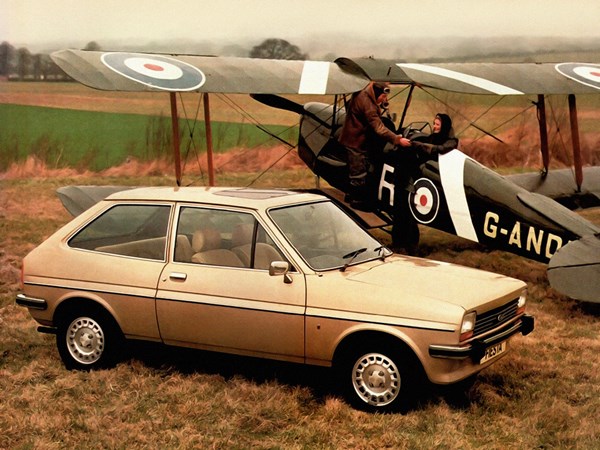
Crisp, clean lines inspire copycat designs in the Soviet Union, but in contrast with 21st century car manufacturing, the Fiesta is a stand-alone model – Ford has yet to adopt the early steps towards platform sharing that rivals General Motors and Peugeot are starting to explore.
- Production of new Fiesta begins in Valencia, Spain in May
- Fiesta initially available in 1.0-litre and 1.1-litre Ghia versions
At the time of the Fiesta’s launch, the UK’s economy was in crisis with strikes, ‘stagflation’ and a need to borrow substantial amounts from the IMF devaluing the currency. In 1976 an average house cost around £12,000, average salary was around £3,500, and the ratio of house price to household income was below 3x (a good thing, given interest rates were at 14.75% and peaked at 23%). Ford, an American company, had to budget around exchange rate fluctuations during the 1976 Sterling Crisis.
1977: UK sales of the Fiesta start on 2nd February, export of Fiestas made in Germany for the US market begins
With a UK list price of £1,856 for the basic 950cc model, the Fiesta was cheap, basic, but reliable. It launched at a time when cars did not last well, most having severe rust before they were seven years old, and lower-cost houses often lacked central heating, double glazing or even, in some areas, indoor toilets. Personal entertainment gadgets could be summed up as ‘a book or a portable radio’ for most people.
1978: Fiesta is one of the first cars to join the new Motability scheme, replacing Invacars for disabled drivers
1979: Millionth Fiesta built for worldwide sales
1981: Ford introduces the new Fiesta XR2, UK list price £5,500
- Features a 1.6-litre ‘Kent’ OHV engine, the first 100mph Fiesta
- Stiffer suspension, unique perforated alloy wheels
- Styling treatments include distinctive auxiliary driving lamps.
- 96hp, 0-62 in 9.7 seconds, 106mph top speed
1982: The Ford Fiesta is the best-selling car in its class in Britain and Germany for six years running
1983: Fiesta Mk2, diesel and automatic refinements
Although it looks very different, a lot of the original Fiesta – including the solid beam rear axle – remains underneath the Fiesta Mk1. Even so, a new interior, changes to most visible bodywork, and a new range of engines and a five-speed gearbox justifies referring to this as the second generation.
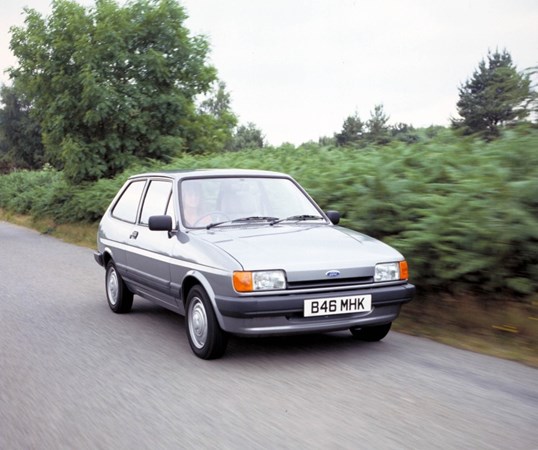
Greater use of large one-piece plastic mouldings for the dashboard and trim makes the Fiesta Mk2 feel more spartan than the original from the passenger side, but the robust, quality feel is a big improvement.
For UK buyers, 1983 was still a period of turmoil, but standards of living had improved. Average wages reached £6,042, with stable interest rates around 10%, and average house prices had risen to around £20,000 – but the DIY and home improvement craze meant better heating, comfort and convenience. These increases reflected improvements, not just value.
Cars followed suit, with heaters, heated rear windows and better refinement now typical for used car owners as well as new. The home computer craze was beginning, and the Sony Walkman ensured the cassette tape was everywhere – music is big business, and in-car entertainment becomes significant for new buyers.
Average salaries had risen to around £5,000, but unemployment was high. A basic Fiesta Mk2 950cc Popular was £3,560 in October 1983 (a 1.1 Ghia would set you back £5,100), and for comparison seven years later this timewarp 1989 1.1 Popular Plus cost its owner £5,280. If they had wanted a 1989 XR2 it would have cost £8,430.
- Longer, with smoother styling and more fuel efficient overall
- 1.0-litre and 1.1-litre
- 1.3-litre model launched with a fifth gear
- 1.6-litre overhead-cam, indirect injection diesel engine introduced
1984: XR2 MkII version of new Fiesta introduced, UK list price £5,731
- 1.6-litre, single-overhead-cam engine and 5-speed gearbox
- Low-profile tyres
- Improved suspension and brakes
- Fiesta XR2: 1.6-litre CVH OHC. 96hp, 112mph, 9.9s
1987: Best sales year in Britain, with 153,000 Fiestas sold
1989: Fiesta Mk3, setting a new standard for superminis
Sophisticated rivals such as the Peugeot 205 and Fiat Uno eclipsed the rather basic, 1976 roots of the original Fiesta during the ’80s, but the car had shown its value in both profitability and market appeal. Significant investment ensured the third-generation Fiesta would appeal to a modern class of buyers familiar with more upmarket, refined small cars than the budget-focused offerings of the 1970s.
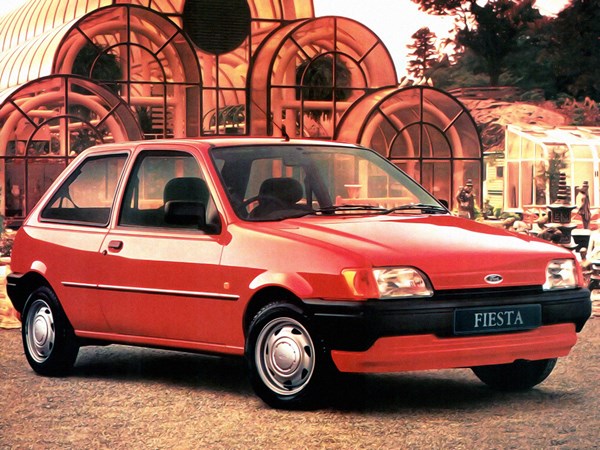
A torsion beam rear axle and stiffer, stronger bodyshell improved handling and refinement, and gave the sporty Fiesta a fighting chance in the battle for hot-hatch supremacy; five doors, safety tech and quieter, cleaner engines add appeal for discerning family car buyers as well.
- Launch highlights include anti-lock brakes and lean-burn engines, in 1.0-litre and 1.1-litre versions
- Longer, wider body shape and an increased wheelbase
- The first five-door Fiesta
- First small car with ABS, QuickClear windscreen
- Fiesta XR2i: 1.6-litre injected CVH, 110hp, 116mph, 10.1s, costing £10,566
1990: Ford Fiesta RS Turbo introduced at Turin Motor Show, UK list price £11,950
- Based on XR2i 8V engine with an intercooled Garrett T2 turbocharger
- Lacked Escort RS Turbo‘s LSD, still 1.6 seconds quicker than XR2i to 100km/h (62mph)
- Fiesta RS Turbo: 1.6-litre turbocharged CVH, 133hp, 127mph, 8.2s
1992: Ford introduces the 1.8-litre, 16-valve Zetec engine, RS1800 replaces RS Turbo
- RS handling, plus five-spoke alloy wheels and a body-colour spoiler
- Bespoke winged seats replace Recaro in RS models
- Fiesta RS1800: 1.8-litre 16v Zetec, 130hp, 124mph, 8.5s, UK list price £11,990
- Fiesta XR2i 16v: 1.8-litre 16v Zetec, 105hp, 113mph, 9.6s, UK list price £10,495
1994: The Fiesta Mk3.5, upgrading the platform and preparing for the future
During 1994 the Fiesta underwent subtle improvements, including stiffer floorpans, a fuel filler behind a flap, support for airbags and power steering, and improved crash resistance, and a new generation of Zetec engines. The joyriding trend means immobilisers are standard on all UK Fords from this point. Mk 3.5 RS1800 highly regarded.
- Driver airbag becomes standard
- Insurance-friendly Fiesta Si: 1.6-litre 16v Zetec, 90hp, 113mph, 10.1s, UK list price £9.855
- Fuel filler flap makes spotting a Mk3.5 easy
- Fiesta Mk3.5 continues into 1996 as the Fiesta Classic
1996: Fiesta Mk4, the hot hatch era ends, and a Ka is born
Controversial looks ensured the launch of the Ford Fiesta Mk4 did not go unnoticed, despite a large amount of the fourth-generation Fiesta having been introduced with the upgraded Mk3.5. The RS1800 and XR2i left the range without a hot hatch competitor, but as rivals were replaced with larger, more luxurious cars Ford used the Fiesta’s platform to create a new, smaller model – the Ford Ka. Reflecting Ford’s long-standing partnership with Mazda, the Fiesta Mk4 was sold as the Mazda 121 as well.
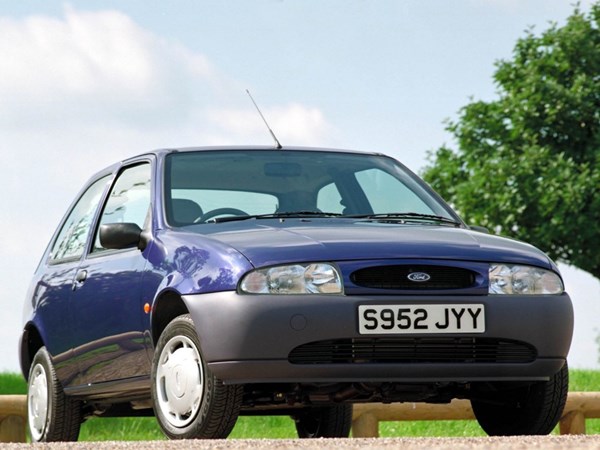
Fast Ford fans were not left without a small, fun car either – the Fiesta Mk4 also provided the basis for the striking new Puma coupe, as Ford embraced platform sharing for a global economy.
Recovering from a recession, the average salary in the UK was around £16,500, but average house prices had risen to around £54,000, despite relatively high interest rates (MIRAS protected home buyers, but lending was still tightly controlled). Car safety and emissions were at the forefront of new designs, as Euro NCAP launched, and personal leasing and PCP finance drove new car sales with deferred payments.
Air conditioning was the hot (or cold) must-have feature, and Britain’s households had adopted satellite TV and ‘the world wide web‘ for entertainment. But the cassette player held fast, despite in-car CD players being the must-have upgrade for the Max Power generation. After the past decade, surely things could only get better?
- Restyled Fiesta Mk4 with rounded, aerodynamic shape and oval grille
- UK list price starts at £7,475
- Available with 1.25-litre and 1.4-litre Zetec/Yamaha engines
- Last revision of Mk1’s Valencia engine, called Endura-E, plus a 1.8-litre diesel
- Dual airbag option, and side impact protection on all models
1999: The Fiesta Mk5, where generations divide
Technically, there’s no such thing as this Fiesta Mk5. Ford consider it a facelift and part of the fourth generation, but most owners, dealers and garages adopted the new look as a new generation. It’s an effective restyling that brings the Fiesta in line with the striking, then-new Ford Focus and Ka as part of Ford’s ‘New Edge‘ design language.
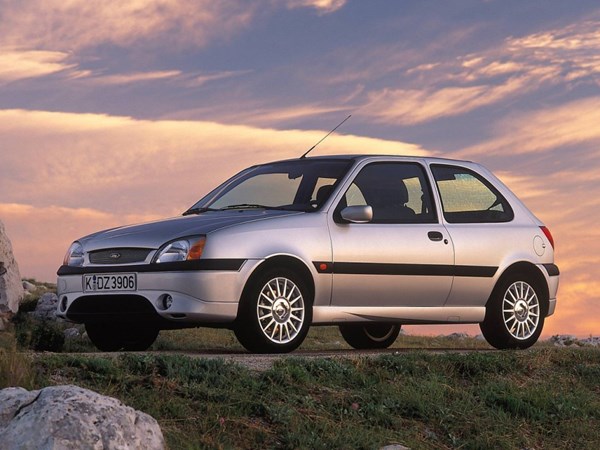
Better yet, Ford dipped a toe back into the performance market with the Zetec S, though this 1.6-litre sporty model was still slower on paper than the original XR2 launched 20 years earlier. Once again, rival superminis were getting bigger and stronger after Euro NCAP highlighted just how vulnerable older, smaller cars could be – with 13 years on the same platform, a new Fiesta was due any minute.
- Short-lived ‘New Edge’ Fiesta introduced, with new engines and sharp-new look
- Well loved Zetec S model rolled out at the end of the year to go on sale in 2000.
2001: Fiesta Mk6, a platform for the future
It looks completely different – and it is. After the badge-engineered Mazda 121, the Fiesta became a true joint venture between Ford and Mazda for the fifth generation, with the tall, spacious Fiesta Mk6 (and the all-new for 2002 Ford Fusion small MPV) sharing engineering with the Mazda 2 and Demio.
Introduced at the Frankfurt International Motor Show in 2001, the tall body of the Fiesta Mk6 introduced a modern style of engineering, losing the slim pillars and exposed window seals of the previous generations. Equipped with a modern range of engines, and inheriting a proven suspension layout from the Mk3-5 models, the emphasis was on big-car comfort.
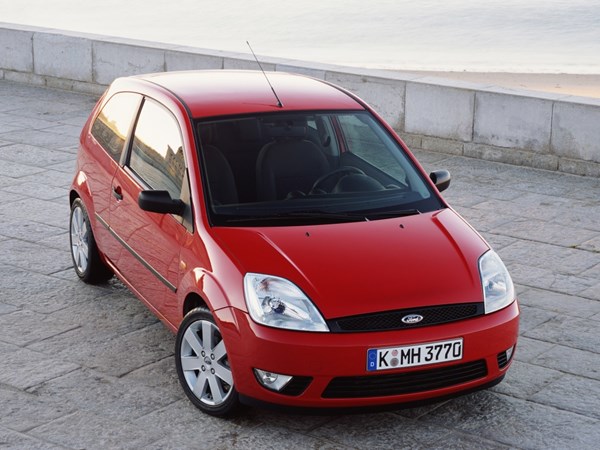
- No more ‘old’ engines – clean, efficient petrol, and powerful diesel options
- Fiesta ST has the biggest engine ever fitted to the Fiesta, at 2.0-litres
- The third spin-off model from the Fiesta is launched, after the Ka and Puma – the Fusion
Refinement, technology and space define the Fiesta Mk6, and this luxury and convenience in an affordable package is very on-trend for Britain’s consumers in 2001. Increasing house prices since 1997 meant the average home cost £97,000 in 2002 (around 40% in five years), while wage growth was around 18% – bolstered partly by a national minimum wage introduced in 1999. During the Fiesta Mk6’s lifespan the average house would more than double in price, while the car (once the second largest cost for a household) would barely increase in price by 10%.
Fast internet, with cable and ADSL services, introduce a new way of sharing information, buying, and selling, and an economy revelling in the new opportunities and low interest rates feels like a long-lost memory. House prices rise dramatically fuelled by over-lending, but at this point the world’s attention focuses on tragedy overseas.
VHS cassettes have gone, replaced by DVD players at astonishingly affordable prices (illegal downloads will eclipse even those). The Fiesta’s in-car entertainment is better than ever, reflecting the new appetite for technology in the UK. Apple’s iPod marks the end of the trusted cassette tape (or does it?). Big double-DIN stereos pave the way for the modern central screen of Ford Sync, but the Fiesta isn’t there yet.
Cheap lease deals with low monthly payments are abundant, and more buyers can afford ‘premium brands’ with high resale – but the Fiesta remains appealing and competitive. More so, when the Fiesta ST marks a return to hot-hatch style fun.
2002: Ford Fiesta Mk6 goes on sale in the UK, initially as a five-door version with a new line-up of engines.
- Fiesta range starts with a UK list price of £8,695 for a 1.3 LX, though AC made it £9,195
- New Duratec 1.3-litre joins 1.6-litre 16-valve Duratec petrol engines
- Fiesta three-door model follows, with 1.4-litre Duratec petrol engine
- New 1.4-litre Duratorq TDCi common rail diesel engine
- Durashift EST automatic shifting manual transmission introduced
2004: Reclaiming the XR’s street cred – the Fiesta ST
- 2.0-litre 150hp Fiesta ST launched; UK list price £13,445
- The first production offering of Ford Team RS.
- It was the most powerful Fiesta ever at the time
- 0-62mph in 7.9s, 129mph, and Mountune made it even faster
2008: The Ford Fiesta ST500, special edition to mark the end of the first generation of Fiesta STs
- Limited run of 500 examples in Panther Black
- Bespoke stripes and graphics, but standard spec
- UK list price £14,516
2008: Fiesta Mk7, a world-class supermini
The sixth-generation Ford Fiesta looks fresh and modern fifteen years after it first took to the roads in the UK – and significant investment in engineering and technology throughout its lifespan kept it at the top of the sales charts. That’s not because it was cheap and readily available; it remained one of the best superminis when judged by critics as well.
The 21st-century’s focus on efficiency and green motoring is reflected in the range of advanced, economical engines introduced during its 9-year lifespan, including the award-winning three-cylinder Ford EcoBoost petrol used in the current Ford range. Quite a contrast from reuse of 1960s OHV designs spanning the first four generations!
Where the Fiesta Mk6 had the Ford Fusion, the Mk7 gets the unusual Ford B-Max, a small MPV with sliding doors, and Ford Tourneo Courier, a small van-derived MPV. The UK also got the Fiesta-based EcoSport SUV, one of the smallest Fords to offer all-wheel drive.
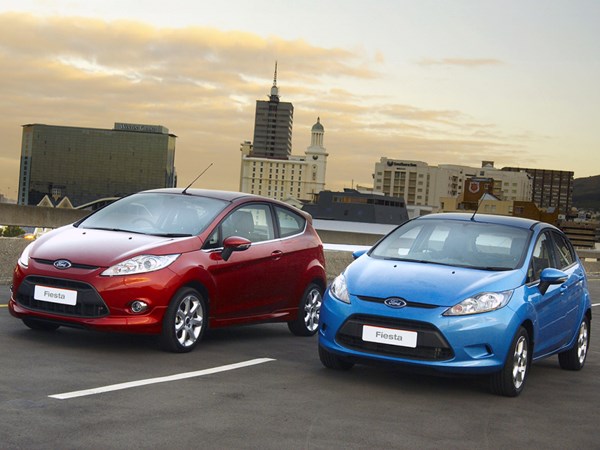
For long-term used car buyers, the Fiesta Mk7 introduced another welcome benefit for the environment. Its body strength, build quality and resistance to rust, combined with ease of maintenance, ensured a regular place in the Parkers Awards as best used car.
UK buyers had enjoyed period of growth and stability, and rising home values ensuring existing homeowners felt very secure. That changed for many, particularly those who had leapt upon lifestyle programs evangelising the profits possible by flipping houses on short-term credit, and the property crash was the first consequence of an unbalanced global economy. The perfect time for a small car with big car quality?
Buyers seemed to think so, but interest rates remained low and credit cheap, if a little harder to come by. A three-year dip in house values soon recovered; meanwhile iPods were replaced by iPhones, TV was supplanted by YouTube, and selfies replaced ‘happy slapping’ as the social media era began.
- All-new Ford Fiesta Mk7 unveiled at Geneva Motor Show
- Fiesta goes into production in Cologne, Germany, Valencia, Spain and Nanjing, China
- New 1.6-litre Duratec Ti-VCT petrol and sub-100g/km 1.6-litre Duratec diesel engines
- A basic Fiesta Style costs around £11,395, though cheaper Studio models arrive later
2012: Fiesta Mk7 facelift introduced
- The first Fiesta to come with the three cylinder 1.0-litre EcoBoost engine
- Launches with Ford’s MyKey technology that would become a mainstay in many future Ford vehicles
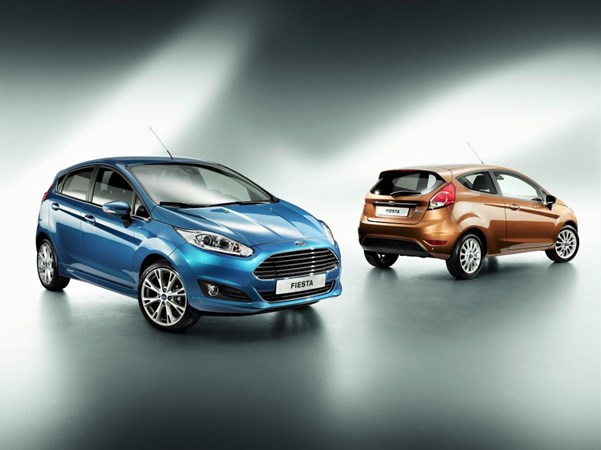
2014: Fiesta becomes best-selling vehicle ever in the UK
- Surpasses the 4,105,961 registrations achieved by the Ford Escort
2015: Best year for Fiesta sales since 1996 – selling more than 133,000
2016: Fiesta ST200, a new benchmark for fast Fiestas
- Specially-developed 1.6-litre EcoBoost engine
- Delivers 200hp without overboost
- Fastest-ever production Fiesta
- Fiesta becomes best-selling car in the UK every month for seven years in a row
2017: Ford Fiesta Mk8, getting ahead of the game
Eagle-eyed owners could see the Fiesta Mk8 owed a lot to the Mk7, but the new model’s fresh styling and redesigned interior trim provided the platform for cutting edge technology and engines. Adaptive cruise control, lavish upmarket Vignale specification and economical three-cylinder engines position the Fiesta at the top of its class, though affordable and fun models such as the Trend and colourful B&O Play remain true to the Fiesta’s motoring-for-the-masses origins.
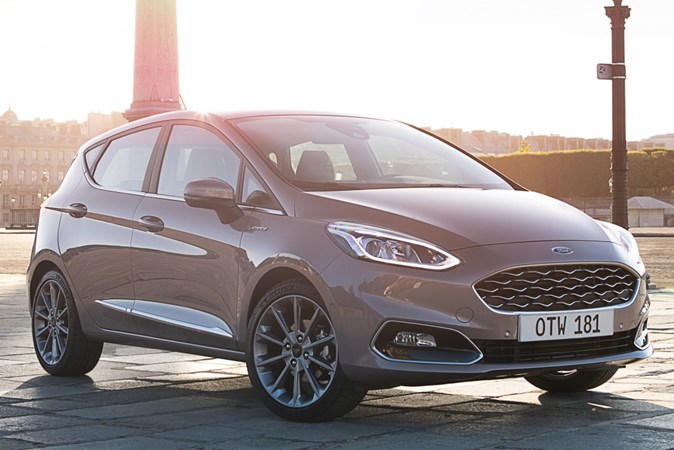
A sophisticated Fiesta ST joined the range in 2018, matching the previous generation’s pace with a smaller, more economical engine that no longer relied on short-burst overboost to deliver 200hp. Following the pattern of extra models, the Fiesta Mk8’s siblings are the rugged Fiesta Active (suggesting Rover were just ahead of the game with the Streetwise) and the New Puma; a small SUV that effectively reboots the ’90s coupe style and attitude – it replaces the B-Max, but the EcoSport continues.
2018: Fiesta Active reaches for the sky
Who says potholes are all bad? If Britain had smooth roads, no-one would want small ‘off-road’ superminis and we wouldn’t have had the Fiesta Active.
2021: Fiesta Mk 8.5 facelift
Keeping the Fiesta fresh, the range is given a new face and relocated badge – but in the process, something is lost. Yes, you’ve guessed it, the three-door Fiesta is no more. But the Fiesta Active got updated as well – possibly one of the shortest-lived Ford nameplates ever.
- Adaptive headlights with LED matrix
- 12.3-inch digital dashboard
- Mild-hybrid upgrades for the EcoBoost engines
- Seven-speed Powershift automatic option
- ST-3 gets Performance Pack upgrades
2022: Cost of living hits Fiesta prices
Reflecting the challenges of shifting economic ideology, a worldwide pandemic, and inflation in the UK, the Ford Fiesta Mk8 sees the greatest increases in price. Launched with a range starting at just over £12,000, five years later the most basic Fiesta you can buy is over £18,000. It’s still one of the cheapest cars available in Britain, and the level of equipment and quality 2017’s buyers enjoyed (2023’s buyers got even more) is much higher than the spartan first Fiesta 40 years prior.
2023: Fiesta production ends
After 47 years of providing what the market wants, at a price the market can afford, the Fiesta ceased production on 7 July 2023. Its place in the Ford range is taken by the Puma, facelifted and simplified with 1.0-litre engines only to make room for an electric model – while the room it vacates at the Cologne factory will be occupied by the wholly-electric Explorer EV.
Just so you know, we may receive a commission or other compensation from the links on this website - read why you should trust us.

